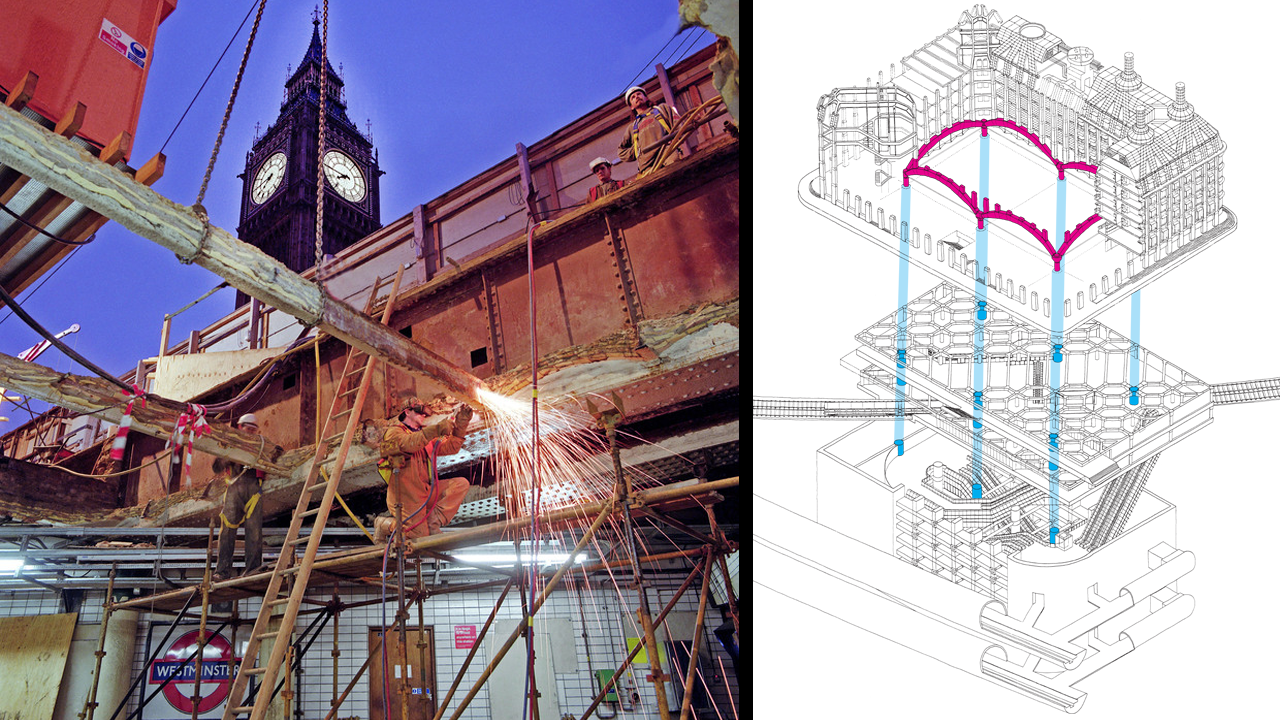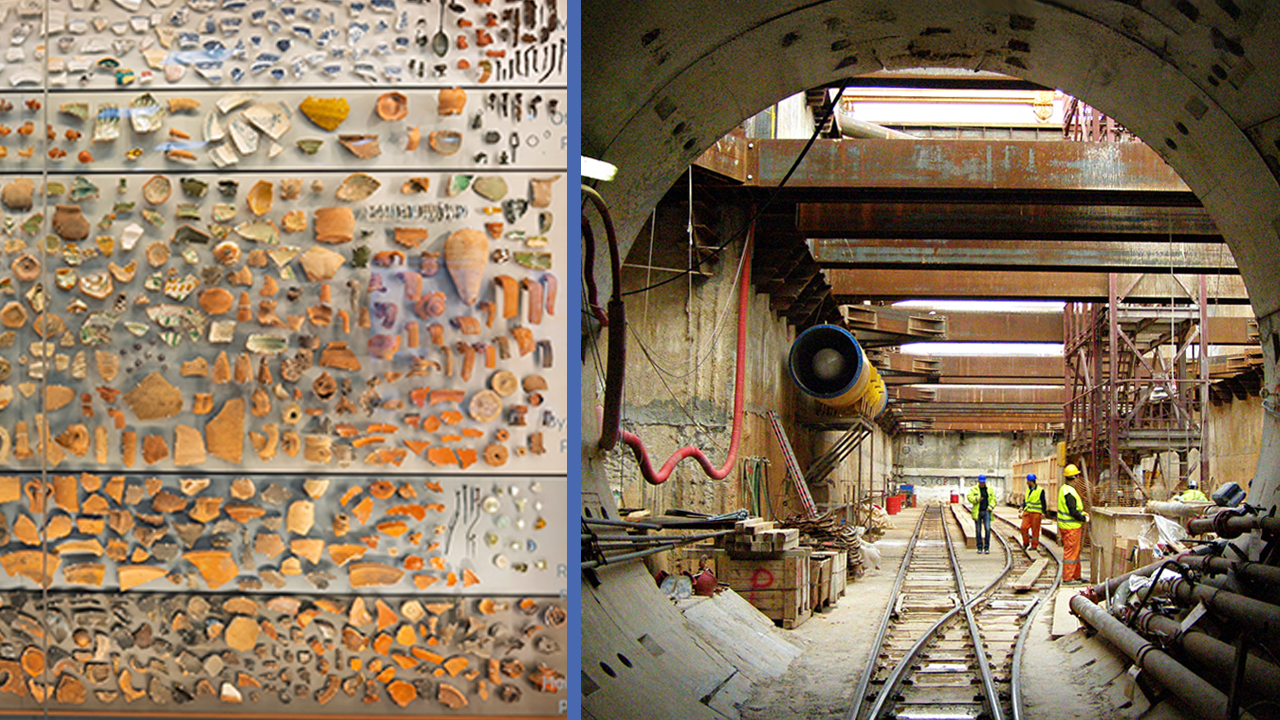The $2BN Plan to Save America's Crumbling Waterways
- Youtube Views 296,763 VIDEO VIEWS
Video narrated and hosted by Fred Mills. This video contains paid promotion for Brilliant.
AMERICA'S inland waterways were once known as ‘the lifeblood of the nation’, and remain so to this day.
From Virginia to Mississippi, it’s a massive network of rivers, canals and lakes that have been critical to moving cargo around the US — and beyond — since before the Great Depression.
And it’s all thanks to the hundreds of locks and dams that allow goods to pass through, control water levels and create energy, which have stood firm for almost a century.
Well, not all of them. A lot of these systems are now in need of a serious overhaul — that is, if they haven’t already reached the point of critical failure.
Many have been operating far longer than they were designed to, and if the ones at risk are not fixed soon, the consequences could be disastrous.
Which is why the US Army Corps of Engineers is working to bring these historic barricades up to modern standards, before it’s too late.
Forgotten infrastructure
If you were asked to think of the most important types of infrastructure in the United States, what would they be? You’d probably go with roads, airports, power stations, or even the systems that provide us with the Internet.
But how many of you went for the inland waterways? In other words, the huge web of marine highways across the US — used to transport a third of its GDP.

Above: The USA's inland waterways — and the more than 200 locks and dams built along them — stretch for 12,000 miles, across 28 states. Map for illustrative purposes only.
In 2021, around 500 million tons of cargo — worth more than USD $158BN overall — were sent via these channels.
They’re not just vital to the economy; industry and agriculture rely heavily on them, they keep water levels in check, generate hydro power … basically, they’re more than just rivers, so ensuring they continue to operate is crucial.
Unfortunately there’s a problem. Some of those integral locks and dams date back to the 1920s and ‘30s — like the ones on the Ohio, Mississippi, Illinois and Tennessee Rivers — and more than half of them are over 50 years old.
This infrastructure was only supposed to last a few decades, and updates are urgently needed. Sites are in danger or have already reached catastrophic failure.
Black mark
Take the Demopolis Lock on the Black Warrior River in Alabama, which suffered a major breach in January 2024.
A fracture in the concrete upper miter sill led to a large chunk of it falling away, releasing water under the lock’s gate and causing a temporary closure.
Around 12 million tonnes of freight pass through the lock every year, including coal, steel and crude oil.
When it was put out of action, ships had to take a detour via the Mississippi that added weeks to their journey.

Above: The repair of the Demopolis Lock took months to complete and required teams to cast concrete underwater. Image courtesy of U.S. Army Corps of Engineers Mobile District / Dalton Yoder.
So, what’s being done to prevent this sort of thing happening across the many waterways with historic infrastructure?
Well, over in Pennsylvania, another scheme is getting underway that will do more than just maintenance; a series of locks and dams on the Ohio River are being expanded.
Economic activity along here is valued at over $2BN annually. If these locks were taken out for a year it would mean replacing barges with 400,000 trucks or 100,000 train cars.
Risky business
Which isn’t as unlikely as you might hope — they’ve been given a 50% chance of failure by 2028, which could lead to the Port of Pittsburgh having to close, the shutting down of regional commerce and even drinking water being affected. Work simply has to be done to bolster their defences and make them fit for the future.
Luckily, the $2BN Upper Ohio Navigation Project is set to do just that — a scheme that’s now had almost half that total secured through federal funding.
$857M was set aside for the first phase. That’s almost a third of all the money allocated to inland waterways in the Infrastructure Investment and Jobs Act, or IIJA.

Above: Three sets of locks and dams northwest of Pittsburgh are being improved as part of the Upper Ohio Navigation Project. Image courtesy of U.S. Army Corps of Engineers Pittsburgh District / Michel Sauret.
The Montgomery Locks and Dam see more than 15 million tonnes of material pass through every year. Mostly used for big industries like power generation.
Like the Emsworth and Dashields Locks and Dams that are also part of the plan, it no longer meets modern design criteria and has been showing signs of structural fatigue for some time.
Recent reports showed leaks visible in the miter gates that hold water back in the lock, and there has been spalling of concrete along the walls of the chambers too.
As a result, some of the monolith joints, where sections of the chamber walls join together, have had to be patched up.
A hydro demolition robot was brought in to break apart the problem areas first of all, before new concrete was applied.
The gears that move the gates are also being restored, along with the valves that fill and empty the locks.
Splashing out
However, these are mostly minor jobs that you would expect to do when maintaining a piece of infrastructure this old. The main project is about delivering something much bigger.
You see, there’s another issue at player here — these locks are no longer big enough for modern river traffic.

Above: Barges have to be broken down into smaller groups before they're able to fit through the locks.
Not for much longer though. The auxiliary chamber — 17 metres wide and 110 metres long — is being replaced with a new set of locks that will be almost twice the size. This will boost freight capacity on the waterway significantly.
Over 300,000 cubic metres of concrete is going to be needed for the new chamber, which is why a batch plant for making the material is being built right next to the site.
A large area of land was cleared away for its construction followed by a retaining wall that will create a boundary between the plant and the locks.
And while the main build is yet to properly begin, one critical bit of preparation has already been completed.
In deep water
Giant drills were used to make what’s called a secant wall. It’s where a series of vertical piles are buried deep into the ground, interlocking with each other to form a sealed barrier.
It may only be small — consisting of 17 piles and a 15-metre length — but it’s 12 metres deep and had to be done entirely underwater. Which is why it took eight months to build.
With this now in place, contractors will have a platform to build the new chamber wall from, and if all goes to plan, work on that should get underway in 2025.

Above: Overall, the project is expected to take eight years. Image courtesy of U.S. Army Corps of Engineers Pittsburgh District / Michel Sauret.
OK, but what about those other locks and dams further up the river? Well, they’re due to be expanded in a similar way as well, but both are a lot further behind.
The Emsworth Locks and Dam also received $77M from the IIJA — enough to complete the design and allow construction to begin in the future. As for Dashields, it’s not yet clear when that will get underway.
But financing these schemes could be about to get easier. In late 2024, Congress will decide whether to allow waterway upgrades covered by the IIJA to be 100% federal funded.
They could also choose to give smaller projects a greater share of federal funding — up from 65% to 75%.
The rest comes from the Inland Waterways Trust Fund, which gets its money from taxing businesses that use the system.
Even if the bill doesn’t pass, the fact that big money is now being spent on this infrastructure at last is surely a step in the right direction.
Just the start?
America’s crumbling infrastructure is hardly a secret any more, but the sorry state of these structures remains somewhat ignored.
When you consider what they actually do, and what would happen if they were left to deteriorate further, their importance cannot be overstated.
While the project in Pennsylvania is a promising start, with time running out to make similar moves across the country, let’s hope there’s a lot more to come.
This video and article contain paid promotion for Brilliant. To try everything Brilliant has to offer for free for a full 30 days, visit https://brilliant.org/TheB1M/ you’ll also get 20% off an annual premium subscription.
Video narrated and hosted by Fred Mills. Additional footage and images courtesy of U.S. Army Corps of Engineers, Michel Sauret, Andrew Byrne, Dalton Yoder, David Elmstrom, Frances Candelaria, Lee Turnipseed, Rydell Thomas, WSFA 12 News, WKRG, WTAE-TV Pittsbirgh and WTOK-TV.
We welcome you sharing our content to inspire others, but please be nice and play by our rules.








